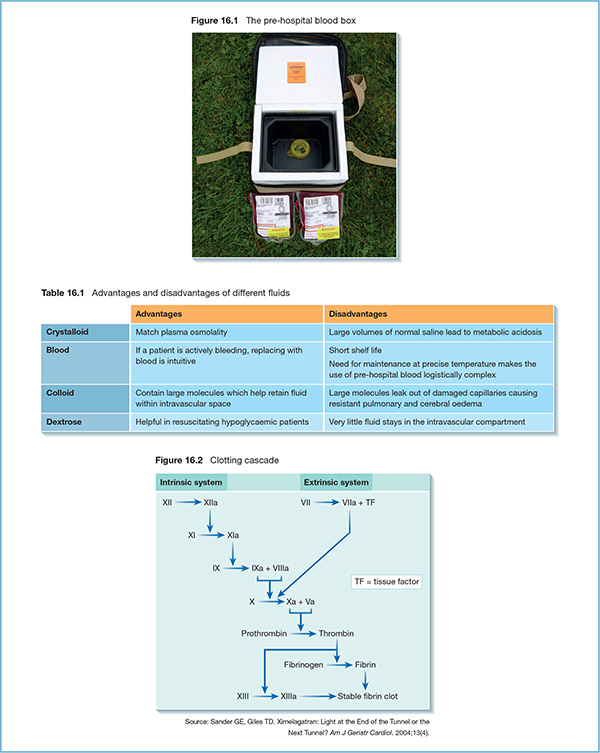16 Modern understanding of fluid resuscitation in trauma has developed largely from recent military conflicts. Early fluid resuscitation of haemodynamically compromised patients is of benefit. However, the volume and speed of fluid resuscitation is, as yet, not well defined. Shock is defined as hypoperfusion of vital organs, i.e. not meeting the metabolic demands of vital organs including the heart and the brain. Traditionally, pre-hospital care teams have relied on bedside measures of tissue perfusion to diagnose shock, e.g. blood pressure and heart rate. However, the best indicators of shock are plasma pH, end-tidal PCO2, lactate and base excess. With point-of-care testing and capnography in pre-hospital care, it may now be possible for the pre-hospital team to access these vital pieces of information on the scene. This will allow more accurate assessment of the state of shock of a patient.
Circulation I: haemodynamic instability

Shock
Suggested pre-hospital markers of shock
Stay updated, free articles. Join our Telegram channel

Full access? Get Clinical Tree








